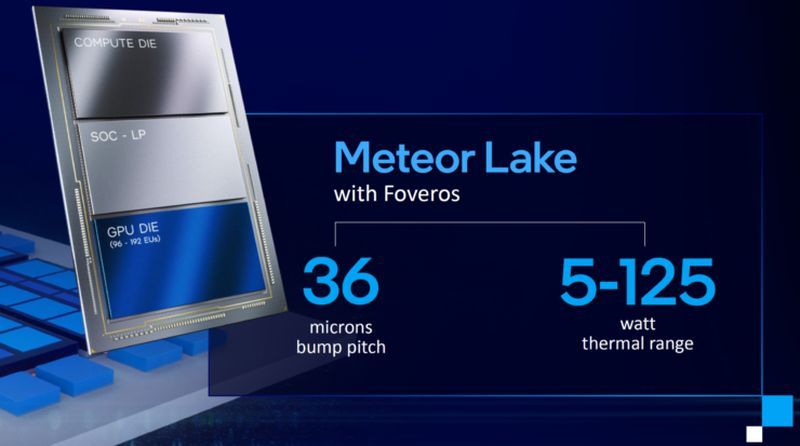Intel will apparently introduce an Apple-style neural engine in its Meteor Lake architecture processors. This was revealed by the YouTube channel Moore’s Law Is Dead, which indicates that Intel is working on its own neural engine.
Intel is reportedly working on introducing a Neural Engine in its upcoming Meteor Lake processors
Intel is expected to unveil its Alder Lake processors on Nov. 4. The company’s new processors are based on a modular processor design connected via EMIB. They will be the first desktop processors based on the 10nm SuperFIN node. They also support the new PCIe 5.0 interface and the new DDR5 RAM.
According to “Moore’s Law Is Dead,” the Meteor Lake architecture could include integrated vision processing units (VPUs). He points out that Intel has hinted at this possibility on several occasions and it’s not far off. Rumor has it that it could be integrated into Intel’s processors by 2023.
According to rumors, the VPU could be embedded in the DIE alongside the processor cores. This is a technology very similar to Apple’s Neural Engine, which is already integrated with the M1 processors.
Intel Meteor Lake processor architecture
It seems that the VPU will be able to process video more efficiently, improving video output. As an example, the video used is Netflix, suggesting that it could be viewed in 4K resolution instead of being downscaled to 1080p due to individual bandwidth speeds. The use of a VPU on low-power processors would lighten the load on the CPU.
Specifically, there is talk of a total of 16 dedicated Neural Engine cores. Only little is known about these new cores, which will be integrated alongside the processor cores.
Meteor Lake will have an integrated VPU accelerator. It is comparable to the Neural in the Apple M1 for speech recognition, language modeling, and possibly a variety of applications when Meteor Lake hits the market.
Neural networks are the next big innovation
While some smartphone SoCs already use machine learning and artificial intelligence, these technologies have yet to reach the desktop processor market. Not only Intel is planning to introduce these technologies in its processors, but AMD is also working on them.
Several rumors suggest that AMD will also add machine learning acceleration to the Van Gogh and Rembrandt processors. The idea is to boost the performance of the processors with a set of dedicated cores. The Ryzen Rembrandt APUs, for desktop and notebook processors, will use this technology for the first time.
There isn’t much information about what Intel’s new cores for its Neural Engine will look like. It looks like they will be created in a separate DIE and then connected to the cores via EMIB. All of the company’s new processors will already be based on separate assemblies and then interconnected using the company’s proprietary technology. We may not get more information about these cores until next year.
